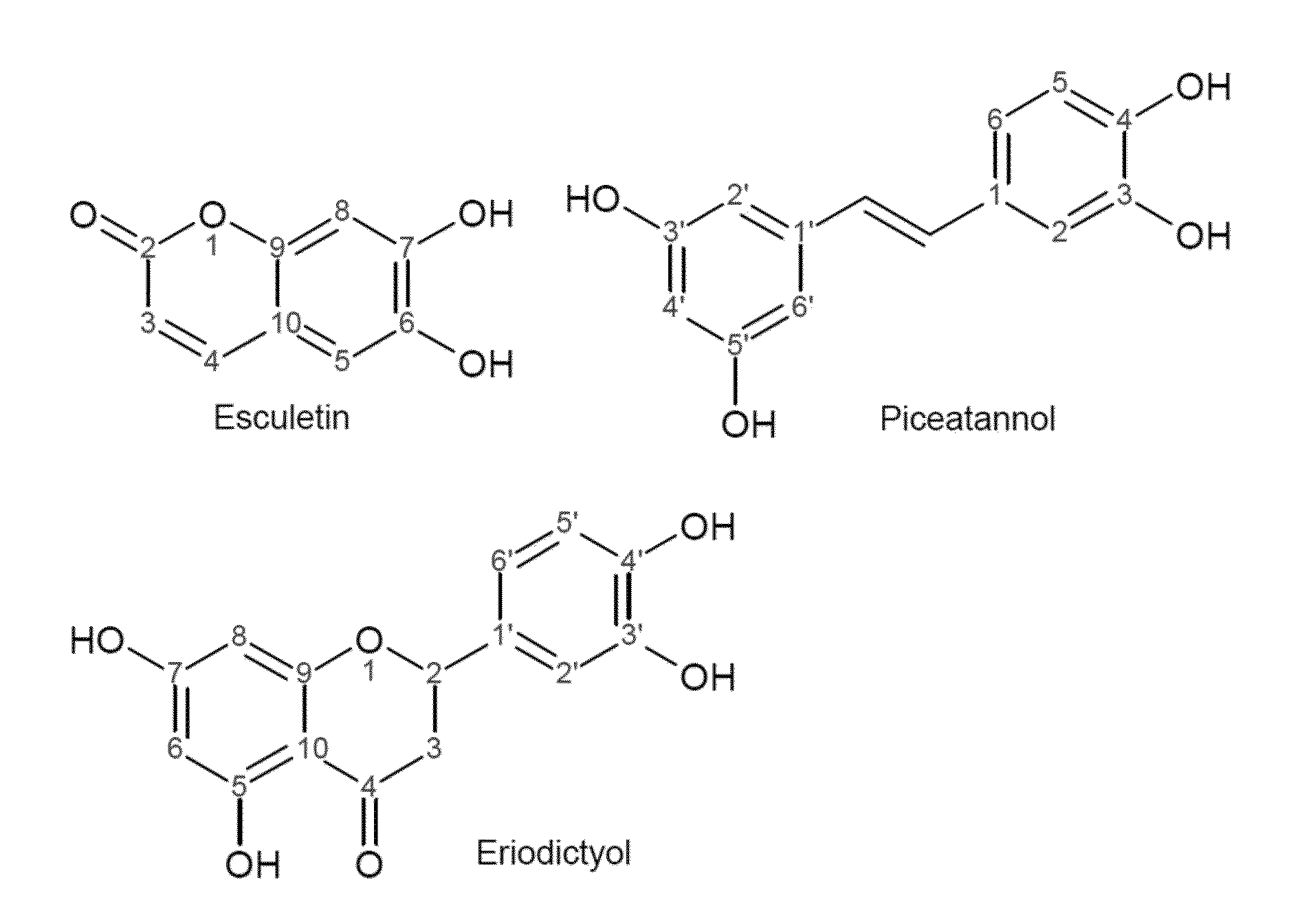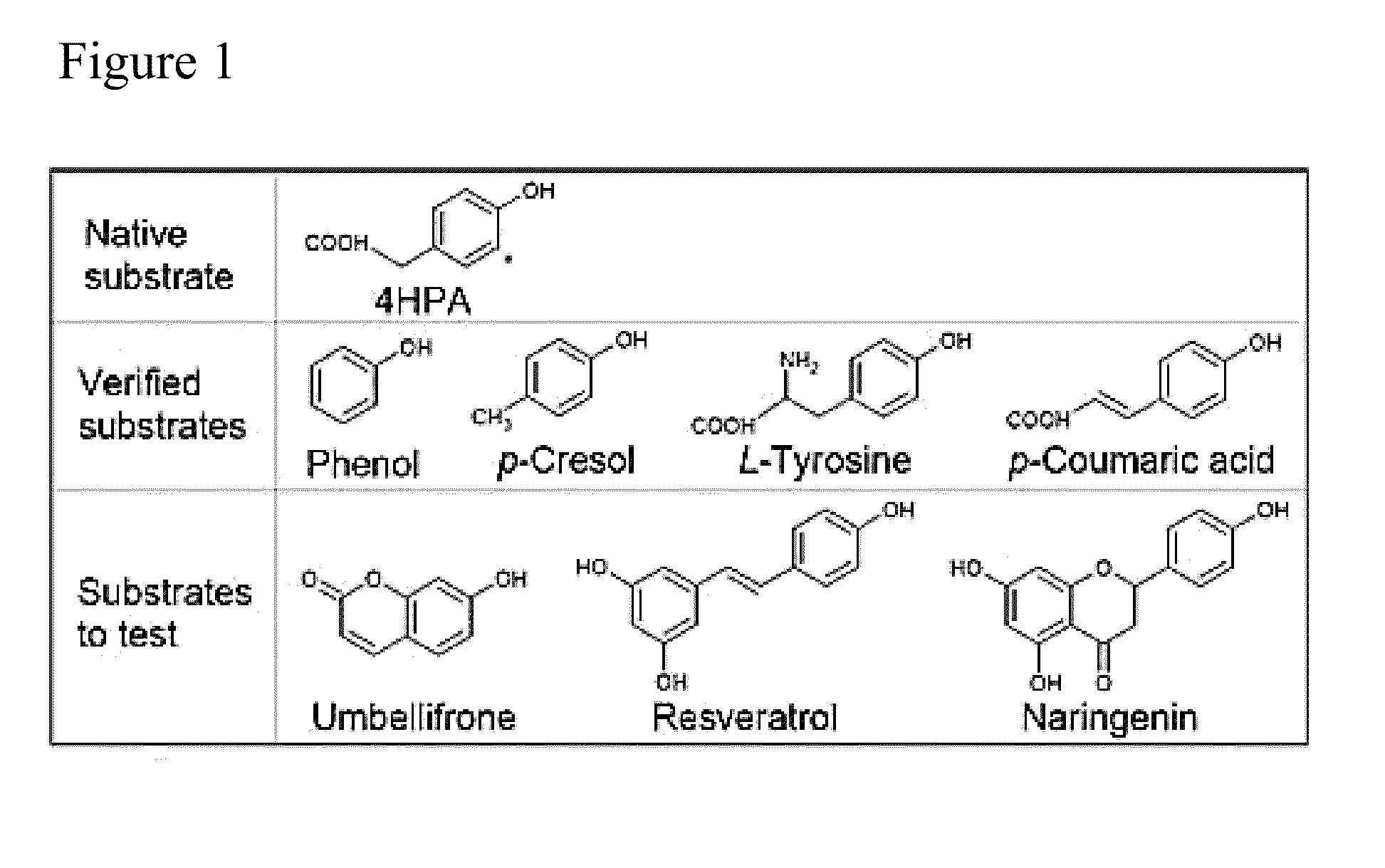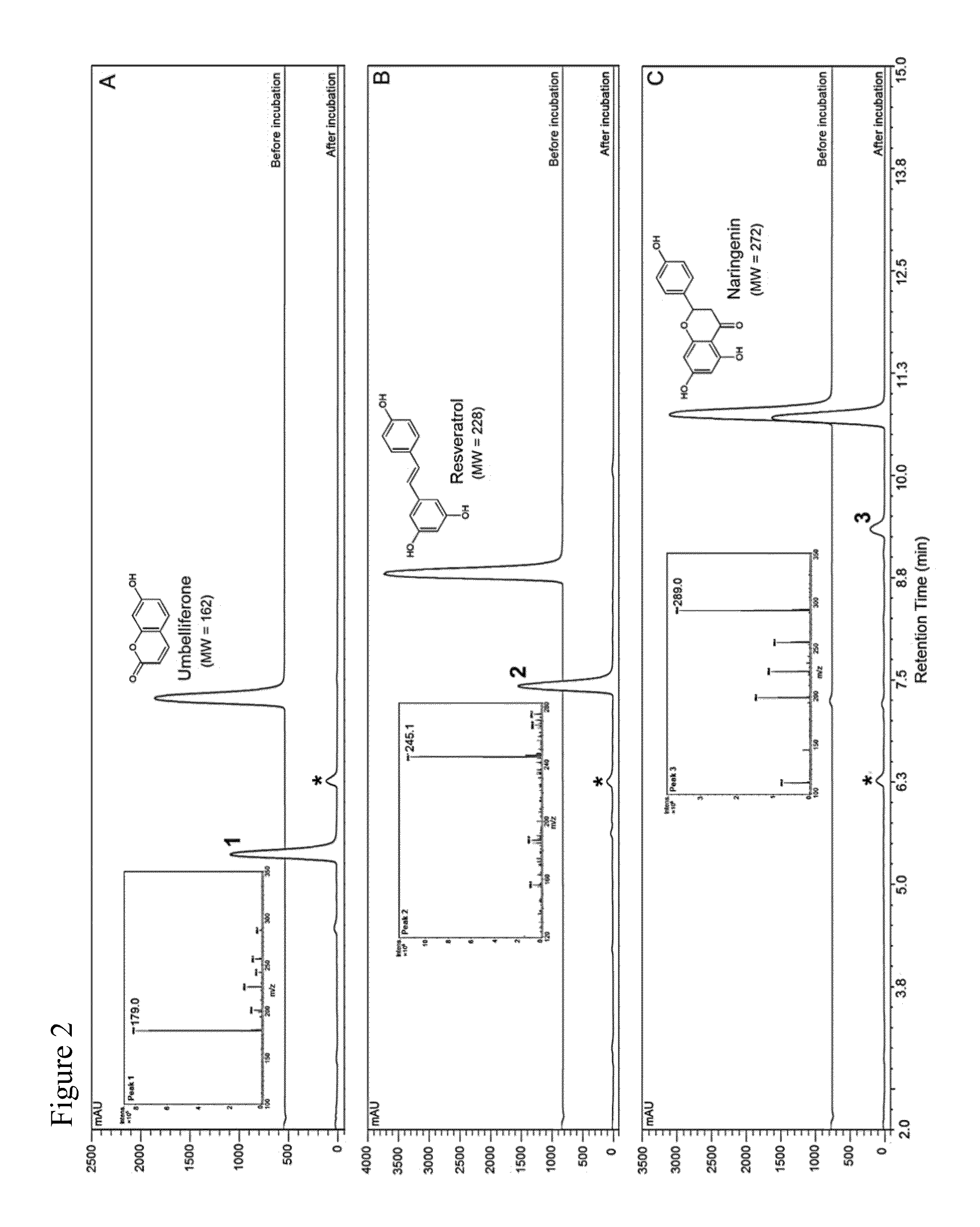Methods for hydroxylating phenylpropanoids
a technology of phenylpropanoids and hydroxylated phenylpropanoids, which is applied in the field of methods for hydroxylating phenylpropanoids, can solve the problems of low coupling efficiency, difficult approaches, and hammering the exploration and application of pharmacological properties of phenylpropanoids, and achieves high conversion efficiency
- Summary
- Abstract
- Description
- Claims
- Application Information
AI Technical Summary
Benefits of technology
Problems solved by technology
Method used
Image
Examples
example 1
[0084]A promiscuous non-P450 monooxygenase (HpaBC) from Escherichia coli was identified to catalyze ortho-hydroxylation of plant phenylpropanoids umbelliferone, resveratrol, and naringenin. Whole-cell biocatalysis afforded the generation of the pharmaceutically important compounds esculetin and piceatannnol with high yields (˜100%) and high titers, demonstrating a promising biocatalytic hydroxylation platform for scale-up applications.
Strains, Plasmids and Media.
[0085]E. coli strain XL1-Blue was used for plasmid construction and propagation. E. coli strain BW25113 containing F′ from XL1-Blue was used for protein over-expression and whole-cell biocatalysis. Plasmid pZE12-luc was used for gene over-expression in E. coli (Lin and Yan, 2012. Microb Cell Fact 11(1):42). Luria-Bertani (LB) medium was used for growing E. coli cells during gene cloning, plasmid propagation, and inoculum preparation; while the whole-cell biocatalysis was performed in modified M9 medium (M9Y) containing (per ...
PUM
| Property | Measurement | Unit |
|---|---|---|
| Structure | aaaaa | aaaaa |
Abstract
Description
Claims
Application Information
 Login to View More
Login to View More - R&D
- Intellectual Property
- Life Sciences
- Materials
- Tech Scout
- Unparalleled Data Quality
- Higher Quality Content
- 60% Fewer Hallucinations
Browse by: Latest US Patents, China's latest patents, Technical Efficacy Thesaurus, Application Domain, Technology Topic, Popular Technical Reports.
© 2025 PatSnap. All rights reserved.Legal|Privacy policy|Modern Slavery Act Transparency Statement|Sitemap|About US| Contact US: help@patsnap.com



